Online Exhibitions
Pages
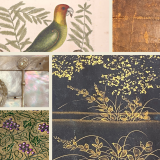 |
Nature of the BookExplore early handmade books through the myriad natural materials—animal, vegetable, and mineral—that went into their making. Nature of the Book shows what the use of these varied and sometimes surprising resources can tell us about the book, touching on questions of use, process, global trade, and economy. On display through September 3, 2024 at the National Museum of Natural History. Visit the online exhibition. |
 |
Music HerStory: Women and Music of Social ChangeWomen’s leadership in music and social change is central to the American story. Music HerStory explores these contributions through unique collections from the Smithsonian Libraries and Archives, the Center for Folklife and Culture Heritage, and more. Through March 24, 2025 at the National Museum of American History. |
 |
Magnificent ObsessionsThis exhibition highlights the personal motivations and enduring impact of the passionate book collectors who were compelled to collect, preserve, and share their “magnificent obsessions” with the nation. Through April 11, 2022. |
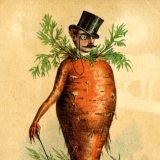 |
Cultivating America’s GardensSmithsonian Libraries and Smithsonian Gardens have partnered to bring you a snapshot of the history and culture of the American Garden from the colonial era to the present day. Visit the exhibition in the National Museum of American History in Washington, DC through August 2018. |
 |
Color in a New LightName a topic that links science, history, art, and culture. How about color? Let’s follow the theme of color through the vast collections of the Smithsonian Libraries, and make a few unexpected connections and discoveries. Color in a New Light launched in January 2016 and will run for 14 months in the National Museum of Natural History in Washington, DC. |
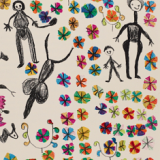 |
Artists' Books and AfricaSince artists’ books are not normally associated with African art, our goal in this exhibition is to introduce the genre and survey its “African” manifestations. Opens September 16, 2015 at the National Museum of African Art in Washington, DC. |
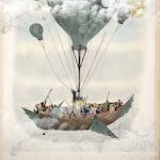 |
Fantastic WorldsTravel with us to the surface of the moon, the center of the earth, and the depths of the ocean — to the fantastic worlds of fiction inspired by 19th-century discovery and invention. Now open at the National Museum of American History in Washington, DC. |
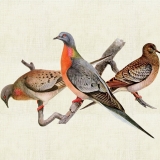 |
Once There Were Billions: Vanished Birds of North AmericaOnce an amazing diversity of birds–some in breathtaking abundance–inhabited the vast forests and plains of North America. But starting around 1600, species began to disappear, as humans altered habitats, over-hunted, and introduced predators. The story of the last Passenger Pigeon and the disappearance of the Great Auk, Carolina Parakeet, and Heath Hen reveal the fragile connections between species and their environment. |
 |
Whales: From Bone to BookThe Smithsonian Libraries opened its new exhibition "Whales: From Bone to Book" in the National Museum of Natural History on May 25, 2013. This exhibition is a joint production of the Libraries and the Department of Paleobiology, National Museum of Natural History. "Bone to Book" will be on display on the ground floor through April 2014. |
 |
Wonder BoundWhy are centuries-old natural history books vital to scientific research? Our scientists consult early printed materials to compare historical descriptions with modern specimens. These researchers use the rare book collection of the Smithsonian Institution Libraries' new Joseph F. Cullman, 3rd, Library of Natural History. |
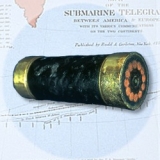 |
Underwater Web: Cabling the SeasA century and a half ago, the world suddenly became smaller when an underwater telegraph cable joined two nations divided by the sea. From that first link, a vast web spread across the globe. |
 |
Science and the Artist's BookScience and the Artist's Book takes its inspiration from the Heralds of Science (1955; rev. ed. 1980), Bern Dibner's bibliography of 200 landmark works in the history of science and technology. In 1995-1996, the Smithsonian Institution Libraries and the Washington Project for the Arts hosted an exhibition of works by more than two dozen artists, who re-interpreted various scientific ideas, methods, and discoveries through their imaginative use of the book form. |
 |
Fold, Pull, Pop and TurnPaper Engineering: Fold, Pull, Pop, Turn presents more than 50 examples of action-packed constructions and inspired works of art spanning 500 years. We hope exhibition visitors will experience these rarely seen treasures as their creators intended—as remarkable works that calculate, educate, entertain, and amaze. |
 |
From Smithson to Smithsonian: The Birth of an InstitutionThis exhibition highlights the life of James Smithson, the English scientist who bequeathed his fortune to the United States to establish an institution "for the increase and diffusion of knowledge." The exhibition tells of the retrieval of the bequest from Great Britain, and describes the controversy this bequest provoked in the United States, up until the 1846 founding of the Smithsonian Institution. It concludes by tracing the early years of the Institution as it grew and developed under the leadership of its first two Secretaries. |
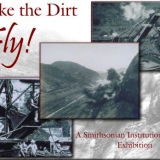 |
Make the Dirt Fly! Building the Panama CanalFor hundreds of years people dreamed of linking the Atlantic and Pacific Oceans across the narrow neck of land connecting North and South America–the Panama Canal. In 1904, the U.S. government embarked on the largest civil engineering project in history, and today, after more than eight decades of efficient operation, the Panama Canal remains a symbol of human creativity, persistence, and achievement. |
 |
Picturing Words: The Power of Book IllustrationAndreas Vesalius, an early physician and progressive scientist, wrote the book "De Humani Corporis Fabrica" (1543) with illustrations of the human body showing muscles pulled back to see what was underneath. The illustrations of Vesalius changed the way people looked at the human form and helped develop modern medicine. Through historic illustrations in books randing from children's alphabet books to medical texts we can see what inspires and drives graphic art. |
 |
Doodles, Drafts & Designs: Industrial Drawings from the SmithsonianHow do ideas evolve into reality? Doodles, Drafts, and Designs: Industrial Drawings from the Smithsonian offers a fascinating glimpse into inventors' sketchbooks, engineers' mechanical drawings, and architects' renderings from the 1830s to the 1990s, to show the origins of some of the most familiar sites and devices of modern-day life. |
 |
Czech Book Covers of the 1920's and 1930's in the Cooper-Hewitt National Design Museum LibraryDuring the period between the two World Wars, the Czechoslovak Republic was an important and prolific center for avant-garde book design. Signed, limited editions showcased experimental design techniques, high-quality materials, and specially commissioned graphics. Book design for the general public, although mass-produced and much more affordable, was similarly innovative and attentive to questions of design. |
 |
Vibrant Visions: Pochoir Prints in the Cooper-Hewitt, National Design Museum LibraryThe pochoir process, characterized by its crisp lines and brilliant colors, produces images that have a freshly printed or wet appearance. The Cooper-Hewitt National Design Museum Library, Smithsonian Institution Libraries, has a rich collection of vibrantly colored illustrated books and periodicals that were created using this process. Explore the history of pochoir with select examples from the library's collection that illustrate costume, interior, and pattern designs produced in France from 1900 through the 1930s. |
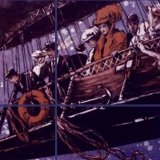 |
An Odyssey in Print: Adventures in the Smithsonian LibrariesThroughout time, explorers have drawn readers to faraway places through stories and songs, maps and drawings, manuscripts and books. Their intriguing accounts of the new and unknown have brought the world closer to those left at home. As you explore six centuries of rare books, manuscripts, art, and artifacts from the Smithsonian Institution, you'll learn how Smithsonian staff use these resources in their everyday work. |
